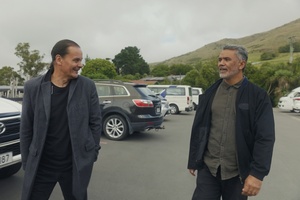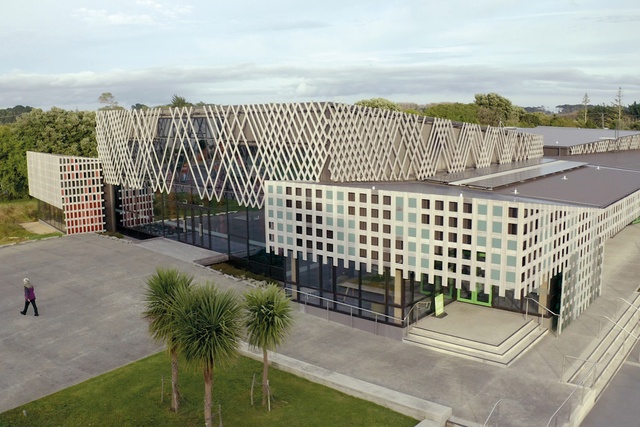The Drawing Board
Anthony Hōete watched Whakaata Māori’s The Drawing Board with Matilda Phillips and, together, they consider its narrative on the rise of Māori architecture.
When Māori Television launched in 2004, it was the first time a broadcaster had looked at life in New Zealand literally through a Māori lens. Indigenous rights to the airwaves did not come easy. Māori Television resulted from a generation- long struggle, culminating in a legal battle against the Crown. Renamed Whakaata Māori, today, the station doesn’t only propel the Māori language but is instrumental in articulating the language of Māori architecture.

“From the time of our arrival in Aotearoa, Māori have created a unique architectural history.” In the prologue to the first television series dedicated to Māori architecture, the anchor of the seminal Whare Māori (2011), Rau Hoskins, asked: “What is Māori architecture?” Whare Māori did not explicitly answer this question, instead tracing the whare’s cultural and social connections.
The new series, The Drawing Board, is less oblique in its messaging. The prologue declares, “New Zealand is at a pivotal point where our built environment is truly beginning to reflect exactly who we are.” Māori architectural identity is being increasingly inserted and asserted into the landscape, transcolonising it with modern Māori influences. Presenter Derek Kawiti asks a big question within the first minute: “So what makes a building Māori?” The Drawing Board offers an immediate riposte.
Empowered by 86 Treaty settlements of $2.6 billion to date, mana whenua today are the design drivers for contemporary New Zealand architecture, with “each new project providing a built canvas for our stories to be told”. Te Wharewaka o Pōneke in Wellington, Scion and Tūrama in Rotorua and Te Ara a Tāwhaki at Ōtaki broadcast the client as being more central to design than is the architect. The story is peppered with insightful anecdotes; Paora Tapsell chose RTA Studio because the architect “had absolutely no conception of things Māori” yet he recognised this architect would be malleable to deep listening.

The series suggests that the architect serving a Māori client will engage in narrative-based architecture. These are stories as told by mana whenua and are to be translated by the architect into built form, material crafting and spatial sequencing. In episode five, a Te Pae Narrative Advisor reflects that her stories were not previously evident in pre-quake Christchurch: “I was sitting in an English city with English values.” The “earthquake did good things” in allowing Ngāi Tahu to sit at the governance table and rebalance the narrative of rebuilding Aotearoa’s most quintessentially English city with future Māori heritage.
With 1.1 million monthly viewers, Whakaata Māori remains the most potent way to connect Māori with Māori architecture via storytelling. This does not mean the series is without issues. More pacey storyboarding and editing would have improved those 24-minute episodes dedicated solely to single projects and allowed additional content and, perhaps, more Māori voices, including that of our host, who remains enigmatic.
Kawiti is an AA-trained professor of architecture specialising in contemporary manufacturing technologies and automation. This reveal alone would have jettisoned the arts-and- crafts nostalgia of the drawing board in favour of the emergent indigenous digital computational space. One also wonders why we must wait until episode three to hear from a Māori architect (Perry Royal’s papakāinga development in Rāpaki). Episode seven could have opened the series, given the charged commentary from its wāhine toa (Tere Insley, Elisapeta Heta and Raukura Turei), who note the absence of te ao Māori in the university curriculum and its subsequent unfolding in practice. As the Chair of Te Wharewaka heralds, “architecture is the best physical way for Māori to show our presence here: that Aotearoa is our home”.
Here’s hoping we don’t wait another decade for the next screened adventures in Māori architecture.

After this article went to print, Whakaata Māori confirmed that a second season of The Drawing Board has been commissioned.









